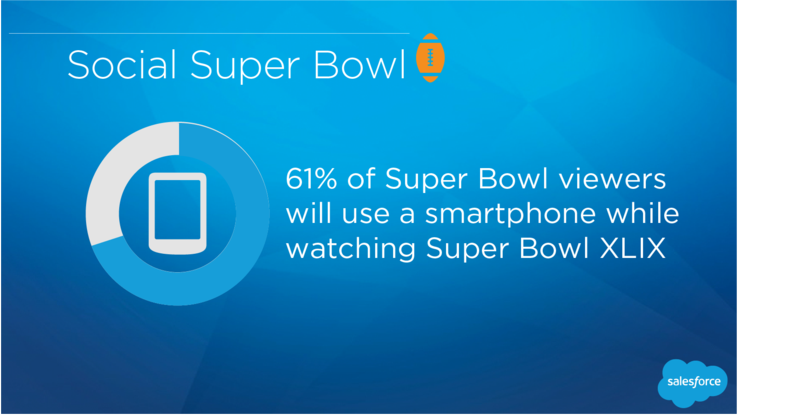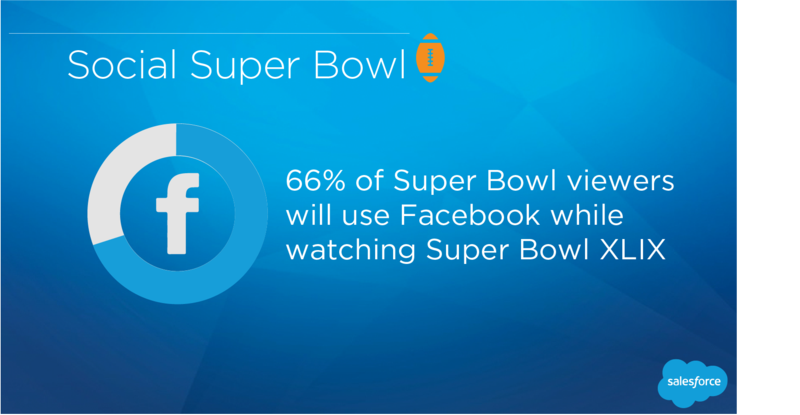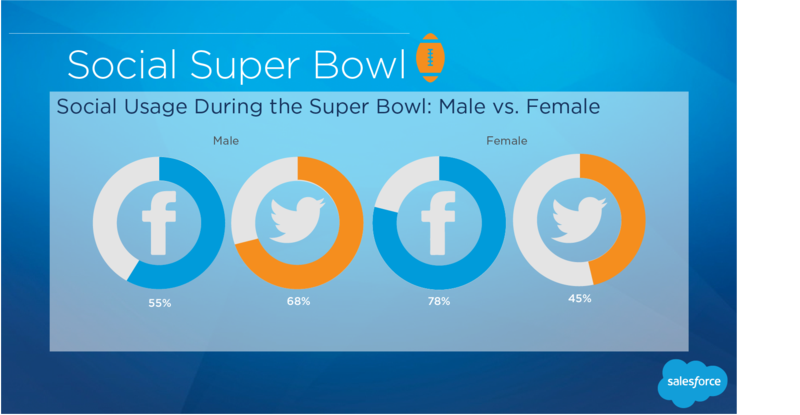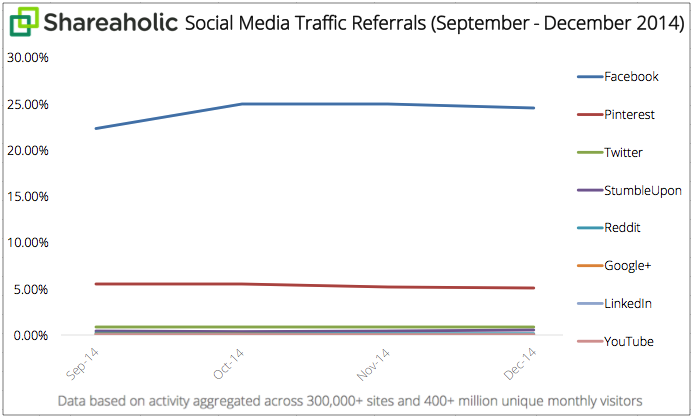
Twitter likes to tout itself as the social media site to watch events unfold as they happen, but a recent online survey suggests the majority of people will be sticking with Facebook during the Super Bowl this weekend.
According to the results of a survey by Salesforce Marketing Cloud, 66% of respondents plan to use Facebook while they watch the game, compared to just 56% who said they plan on using Twitter. Instagram came in third with 31% and Snapchat followed with just 11%.

Marketing Cloud’s survey received more than 400 responses over the past week, which means the survey is far from scientific. Nonetheless, the results do provide some insight into viewer behavior on social media during the big game.
The findings also showed that over 60% of Super Bowl viewers will be watching with a smartphone in hand, 24% will have a tablet, and 20% plan to watch with their laptop.
The results also provide some demographic information. Unsurprisingly, younger users leaned towards newer social media channels such as Snapchat, which will be used by approximately 45% of people between the ages of 12 and 24. However, Facebook and Twitter still led the poll within the demographic. Over 80% of 18-24 year olds will be Tweeting during the game, while 66% plan on posting to Facebook.
It is also not surprising to find Facebook had the biggest pull with older viewers. Over 75% aged 35-44 say they will use Facebook, compared to 54% who will use Twitter. This trend continues in the 45054 demographic, with 71% planning to use Facebook and 54% planning to use Twitter.

Perhaps the biggest shock in the results is the distribution of gender amongst social media platforms. Facebook overwhelmingly draws in female users, with 78% planning to post during the game. In comparison, only 45% of women plan to use Twitter. The results were distinctly reversed for men, 68% of whom will be Tweeting, compared to 55% for Facebook.

 Facebook is making it a lot easier to measure the amount of new business you get from ads on the social media site,
Facebook is making it a lot easier to measure the amount of new business you get from ads on the social media site, 



 The Super Bowl is quite possibly the biggest single day for advertisers. There aren’t many other times you’ll hear anyone proclaim they are watching something “just for the commercials.” But, it has always been difficult for online marketers to get into the mix. That all might be changing as Facebook has announced a new tool to help online advertisers target people interested in the “Big Game.”
The Super Bowl is quite possibly the biggest single day for advertisers. There aren’t many other times you’ll hear anyone proclaim they are watching something “just for the commercials.” But, it has always been difficult for online marketers to get into the mix. That all might be changing as Facebook has announced a new tool to help online advertisers target people interested in the “Big Game.”




